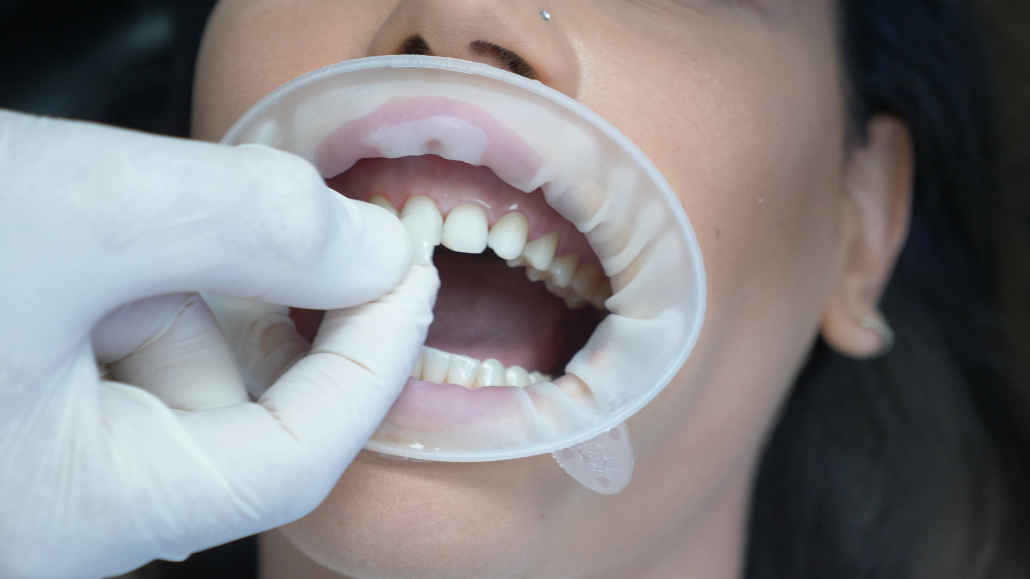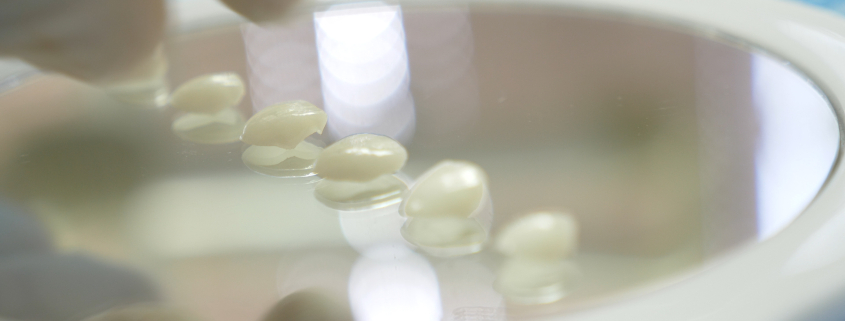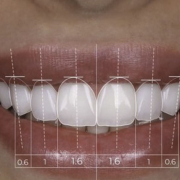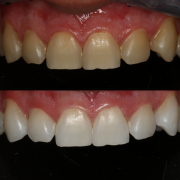Are you a dental veneers candidate?
Have you ever wondered if you are the right candidate for dental veneers? The promise of a flawless smile, sometimes delivered in just a few appointments, makes dental veneers one of the most coveted cosmetic treatments worldwide. Yet, the road to that dream smile isn’t as simple as walking into a clinic and walking out with a new set of teeth.
Social media, TV makeovers, and word-of-mouth success stories create the illusion that veneers are a universal solution for anyone dissatisfied with their smile. At Silver Oaks Dental Clinic, we want to dispel that myth. Veneers are powerful, but only suitable for the right candidates. We explain why thorough assessment is indispensable, how candidacy is determined and why ethical clinics take extra care before committing to this transformative procedure.

Why Veneers Are Not a ‘Quick Fix’ for Everyone
Veneers are wafer-thin, custom-made shells (usually porcelain) bonded to the front of natural teeth—masking stains, chips, gaps, and minor misalignment. When placed correctly, they offer a transformation that’s both beautiful and durable.
But placing veneers on unhealthy, weak, or misaligned teeth risks failure, discomfort, or even long-term harm. Candidacy assessment is the most important step and it’s why patients need to know whether they are the right candidate.
Dispelling the Veneer Myths
Myth: Anyone can get veneers; you just need money and time.
Fact: Candidacy depends on underlying dental health, enamel quantity, bite alignment, oral habits, gum condition, and much more.
Myth: You can simply “cover up” all problems with veneers.
Fact: Veneers enhance—their success relies on treating foundational issues first.
The Silver Oaks Candidacy Assessment: What To Know Before You Commit
At Silver Oaks, your veneer journey begins with our signature Candidacy Assessment:
- Mouth and gum examination: We check for untreated tooth decay, infection, and gum disease.
- Bite and alignment review: Teeth must align well to avoid uneven stress and premature veneer failure.
- Enamel measurement: There needs to be enough healthy enamel for safe and long-lasting bonding.
- Lifestyle/habit analysis: We discuss night-time teeth grinding (bruxism), diet, and oral hygiene to assess risks to your veneers.
- Expectations and goals: We talk about your motivation and what you hope to achieve—which guides our recommendations.
Digital Smile Design: See Your Future Smile Before Treatment
Unlike old-fashioned “trial and error” methods, we use digital smile design technology to help you visualise your likely outcome. Through high-resolution imaging and custom software, we create digital simulations that reveal what your post-treatment smile will actually look like—before any procedures are performed. This process builds confidence, sets realistic expectations, and ensures you’re truly satisfied with the plan.
Who Is the Ideal Candidate for Dental Veneers?
Not everyone qualifies immediately, but if you see yourself in the list below, you’re well on your way.
Ideal candidates typically have:
- Good general and oral health: Free from untreated dental decay, gum disease, or chronic infections.
- Healthy, sufficient enamel: Thin, but enough for veneer bonding without risk of exposure or sensitivity.
- Stable bite/alignment: Mild issues are fine; severe malocclusion may require orthodontics first.
- Minor-to-moderate cosmetic concerns: Discoloured, chipped, slightly gapped, or uneven teeth that are structurally sound.
- Healthy lifestyle and good oral hygiene: Non-smokers, those who brush and floss regularly, and people who manage habits like grinding are best suited.
- Realistic expectations: Veneers will greatly enhance your smile and with the help of digital smile design, you’ll know what your smile will look like before you even start.
Who Isn’t Ready for Veneers Just Yet?
If you are not a candidate now it doesn’t mean it’s the end of your smile journey. Often, it means a stepwise approach:
Reasons for ineligibility and solutions
- Active gum disease (periodontitis): Treatment and healing must occur before veneers, as unhealthy gums can expose vulnerable tooth edges and compromise results.
- Untreated tooth decay or large fillings/cavities: Decay must be repaired and teeth possibly rebuilt or crowned before veneer consideration.
- Insufficient enamel: For teeth with severe wear—sometimes from grinding, harsh brushing, or old fillings—you may need other solutions (e.g., crowns), but sometimes minimally invasive veneer systems can still work.
- Major bite/protrusion issues: Orthodontic movement (clear aligners or braces) may be required first to align teeth, after which veneers can be placed safely.
- Chronic teeth grinding (bruxism): Nightguards and habit management can protect future veneers (often part of the initial treatment phase).
At Silver Oaks, our care plan always prioritises the foundation before the final look. We map out a step-by-step approach by restoring health first and then proceeding to beautiful results.
The Silver Oaks Approach: Personalised, Patient-First and Powered by Technology
Patient safety, honesty and communication underpin every case. We dedicate time to understanding your smile goals while explaining what’s achievable, safe and sustainable.
- Digital smile design: Preview your smile makeover, empowering you to give feedback and understand the process.
- In-house laboratory: Our technicians and dentists work closely together, ensuring veneers fit your teeth perfectly, match your facial features, and suit your individual skin tone.
- Attention to detail: From shade analysis to final polish, everything is bespoke—your smile is unique, and your solution is too.
- Comprehensive care: If you need cleaning, fillings, orthodontics, or gum therapy before veneers, we provide a detailed plan, timeline, and clear costs upfront.
- Ongoing support: We’re committed to your long-term success, from aftercare appointments to tips for keeping your smile looking its best.
The Pathway for Patients Who Aren’t Immediate Dental Veneer Candidates
Many people visit us hoping for veneers and discover, after assessment, that “one or two steps” are needed first. These may include:
- Gum therapy and oral hygiene improvement: Non-surgical treatments resolve inflammation and secure healthy, pink gum margins that perfectly “frame” your future veneers.
- Caries treatment: Fillings or root canal therapy, if indicated, to stabilise teeth before any restorative or cosmetic work.
- Tooth alignments such as clear aligners: Straightening the teeth makes veneer work more predictable and yields better long-term results.
- Occlusal (bite) rehabilitation: Adjustments to your bite—through minor reshaping or custom guards—ensure veneers aren’t subject to excess pressure.
Our philosophy is simple: We prepare the “canvas” first. Once your dental foundations are strong, we can safely move ahead with your cosmetic transformation, confident of lasting, natural-looking results.
The Veneers Procedure at Silver Oaks. What Happens Step by Step?
- Comprehensive Assessment: You’re welcomed with a thorough exam—photos, digital x-rays, discussion of your concerns, and digital smile design preview.
- Planning and Preparation: We discuss potential preparatory treatments if required, answer any questions, and set realistic timeframes and costs.
- Tooth preparation (if a candidate): A minimal amount of enamel is gently removed from each tooth needing a veneer. Temporary veneers may be placed for comfort and aesthetics.
- Custom shade analysis and crafting: Our on-site lab creates veneers that replicate the colour, translucency, and shape of natural teeth.
- Veneer bonding and final adjustments: We place your new veneers, ensuring comfort and harmony with your bite and surrounding teeth. Minor tweaks are made as needed.
- Review and maintenance: We provide guidance on aftercare and book check-ups to monitor your veneer health and your overall smile.
Longevity and Maintenance
Porcelain veneers, when cared for, last 10–15 years or longer. Maintenance involves good oral hygiene, routine check-ups, and avoiding very hard foods. For those with a history of tooth grinding, custom nightguards protect both the veneers and your natural teeth.
Is the Veneers Assessment Worth It?
Absolutely. Rushing into veneers without proper preparation risks not only your investment but also your long-term dental health. Silver Oaks’ approach ensures your transformation is built on solid ground so that your new smile is a source of pride for years to come.
Candidacy Self-Checklist
Tick most of these and you may be ready to begin your veneer assessment:
- My teeth and gums are healthy (no active decay or bleeding)
- I am diligent with brushing, flossing, and dental check-ups
- My cosmetic concerns are mild/moderate (chips, stains, small gaps)
- I do not heavily grind or clench my teeth (or am open to treatment)
- I value a natural look over an artificial result
- I am committed to ongoing maintenance and aftercare
Book Your Veneers Assessment with Silver Oaks Dental Clinic
If you’re considering dental veneers, don’t skip the most important step: assessment! At Silver Oaks Dental Clinic, we blend world-class technology, honesty and artistry to ensure every smile we create is built to last.
If you have a question about your candidacy for dental veneers, leave a comment or contact us directly—a member of our expert dental team will be happy to advise you.
Common Questions from Veneer Candidates
Q: Will I feel pain during the assessment or veneer process?
A: Veneer procedures are generally pain-free—with local anaesthetic used during any enamel preparation for total comfort.
Q: What if I have fillings or crowns?
A: Crowns cannot be veneered, but teeth with small, stable fillings often can. We review each case individually.
Q: What’s the best age for veneers?
A: Generally, once adult teeth have fully erupted. Most candidates are adults or older teens seeking lasting confidence.
Q: Are veneers reversible?
A: Veneers require permanent changes to the natural tooth, so it’s important to be sure. Silver Oaks’ digital preview helps you decide, and we go through all pros and cons with you.
Q: Will my diet or lifestyle need to change?
A: We recommend avoiding biting hard objects, reducing highly pigmented foods if you choose composite veneers (porcelain is far more stain-resistant), and maintaining robust oral hygiene.
Q: Can I get veneers if I grind my teeth?
A: Yes, if grinding is controlled. We’ll advise you on a custom nightguard and possibly address the clenching with additional therapy beforehand.










Leave a Reply
Want to join the discussion?Feel free to contribute!